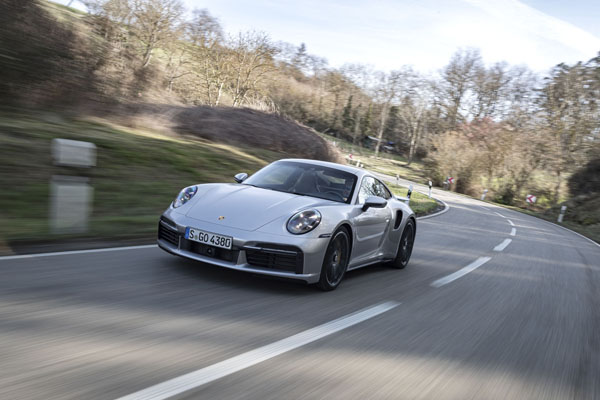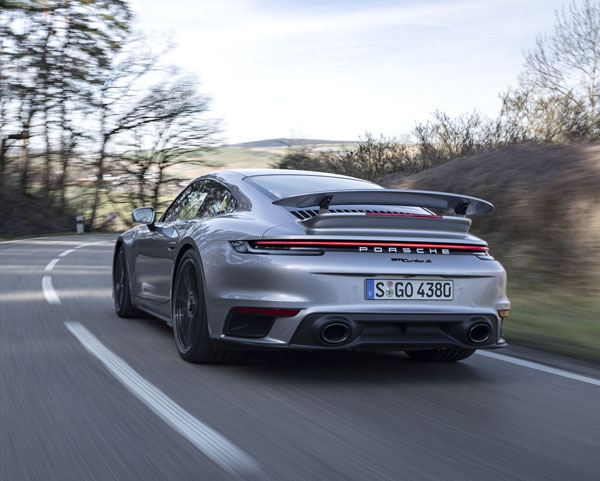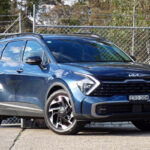 More powerful, dynamic and comfortable than ever before: the new 911 Turbo S sets new standards in many areas. That is also true for the adaptive aerodynamics, which Porsche has further enhanced in its flagship 911.
More powerful, dynamic and comfortable than ever before: the new 911 Turbo S sets new standards in many areas. That is also true for the adaptive aerodynamics, which Porsche has further enhanced in its flagship 911.
Porsche Active Aerodynamics (PAA) adapts the aerodynamic characteristics of the vehicle even more precisely to the driving situation, speed and selected driving mode.
“No other sports car reacts to different situations with such aerodynamic flexibility as the new 911 Turbo S,” said Dr Thomas Wiegand, Head of Aerodynamics Development at Porsche.
“We aerodynamic engineers are normally faced with a dilemma: a low drag coefficient is desirable for maximum speed and low consumption, while a high downforce is advantageous for driving dynamics. However, the two characteristics contradict each other.”
“PAA resolves the conflicts between these different aerodynamic goals. The comprehensive expansion of the intelligent system in the 911 Turbo S makes it possible to achieve a much larger spread between the aerodynamic configurations for optimum driving dynamics and minimum drag.”
The active cooling air flaps are new. Together with the variable front spoiler lip as well as the extending and tilting rear wing, the new top-of-the-range model therefore features three active aerodynamic components.
PAA has also been extended to include a Wet Mode function, which moves the aerodynamic balance towards the rear axle for greater driving stability in wet road conditions. The airbrake function also produces higher drag and greater downforce in the event of full braking at high speed and therefore results in a shorter braking distance and greater driving stability.
PAA is also used for adaptation to the changed air flow around the vehicle when the sliding roof or convertible top is open. This means that there are a total of eight different aerodynamic configurations, which are each described by a specific combination of the active aerodynamic components.
The newly designed active front spoiler and rear wing have increased the downforce by 15 percent to guarantee enhanced driving stability and dynamics at higher speeds. The maximum downforce in the Performance position (Sport Plus mode activated) is now around 170 kg.
The newly developed controlled cooling air flaps permit a lower driving resistance and thus reduced fuel consumption. The flaps are located in the right and left air intakes of the front apron. They are continuously adjustable and control the cooling air throughput through the radiators.
The active front spoiler of the Porsche 911 Turbo has been significantly enhanced. The effective aerodynamic area has been increased compared with the predecessor. Extension and retraction can now take place in a shorter time with lower pressure.
Lightweight construction is used on the rear wing. Electric adjustment of the wing, which can be extended and tilted, is performed primarily depending on the speed and selected driving mode.
The new airbrake function is activated automatically in the event of full braking at high speeds. The front spoiler and rear wing are then moved to the Performance position. The higher drag and increased downforce can reduce the braking distance. Driving stability is also improved during braking.
Different equipment variants are also taken into account in the configurations for the individual positions. The control strategy also allows for whether the car is a Coupé or Cabriolet and whether a Sport Design package with different body contours is installed at the front and rear.












